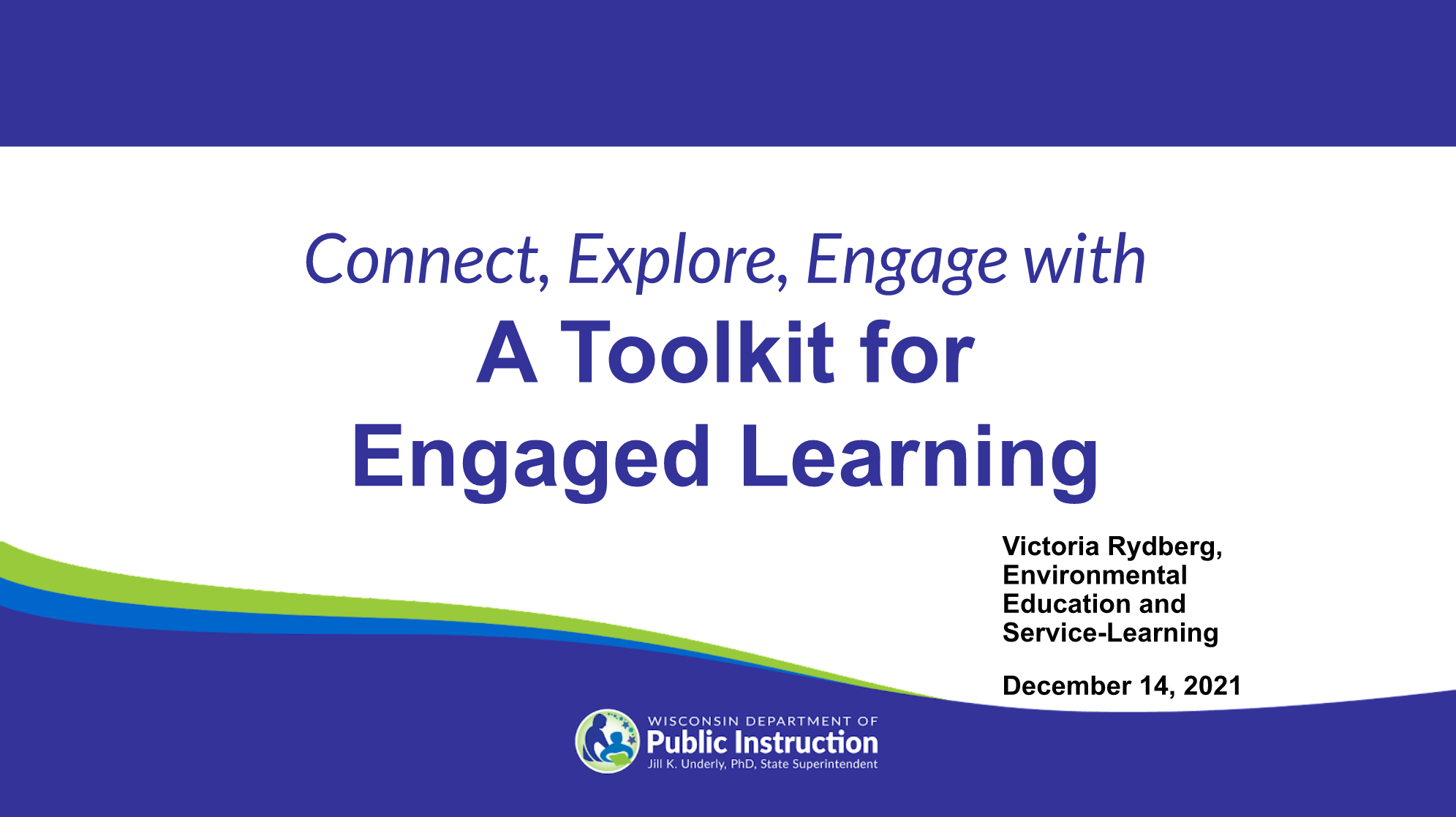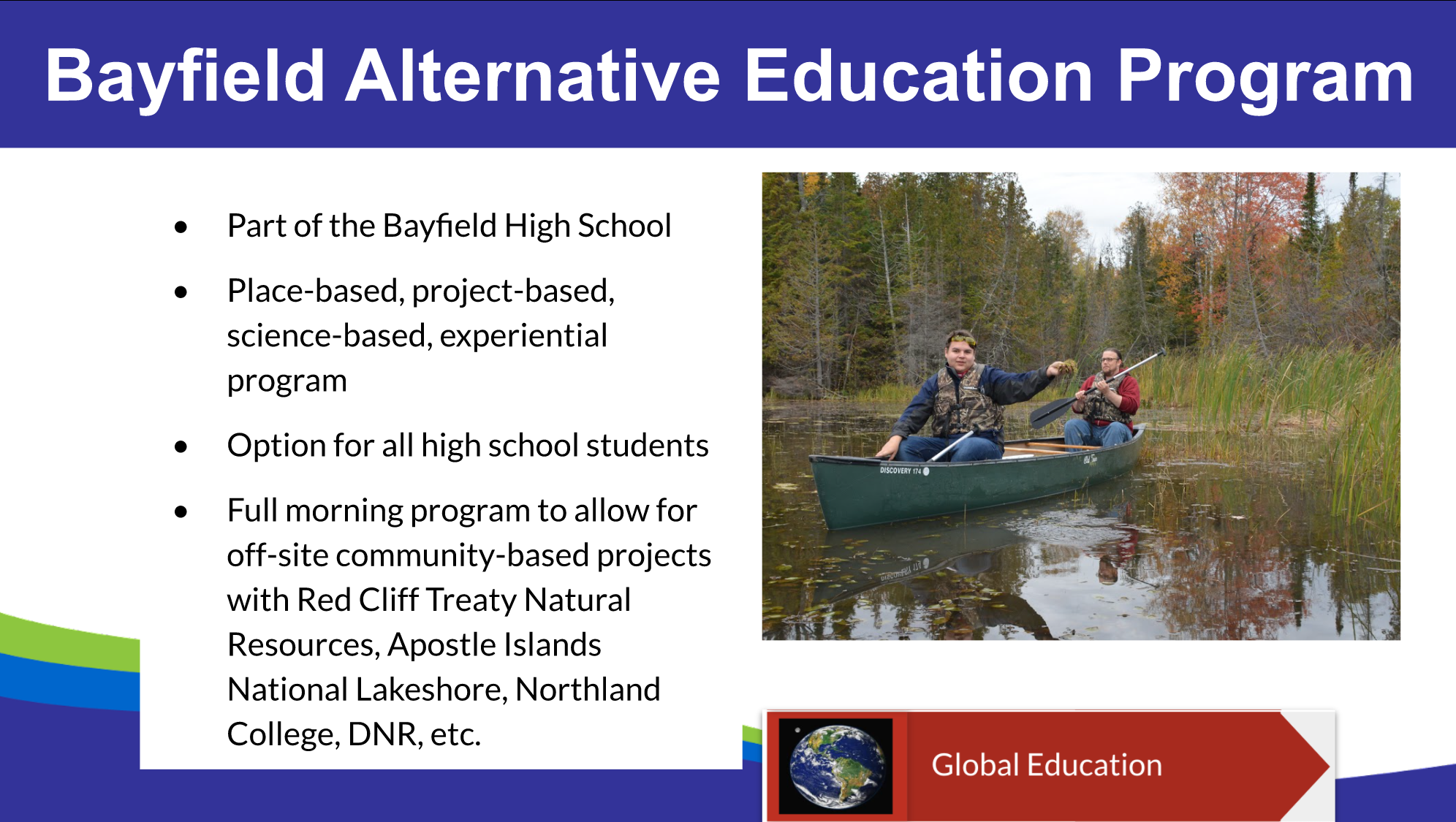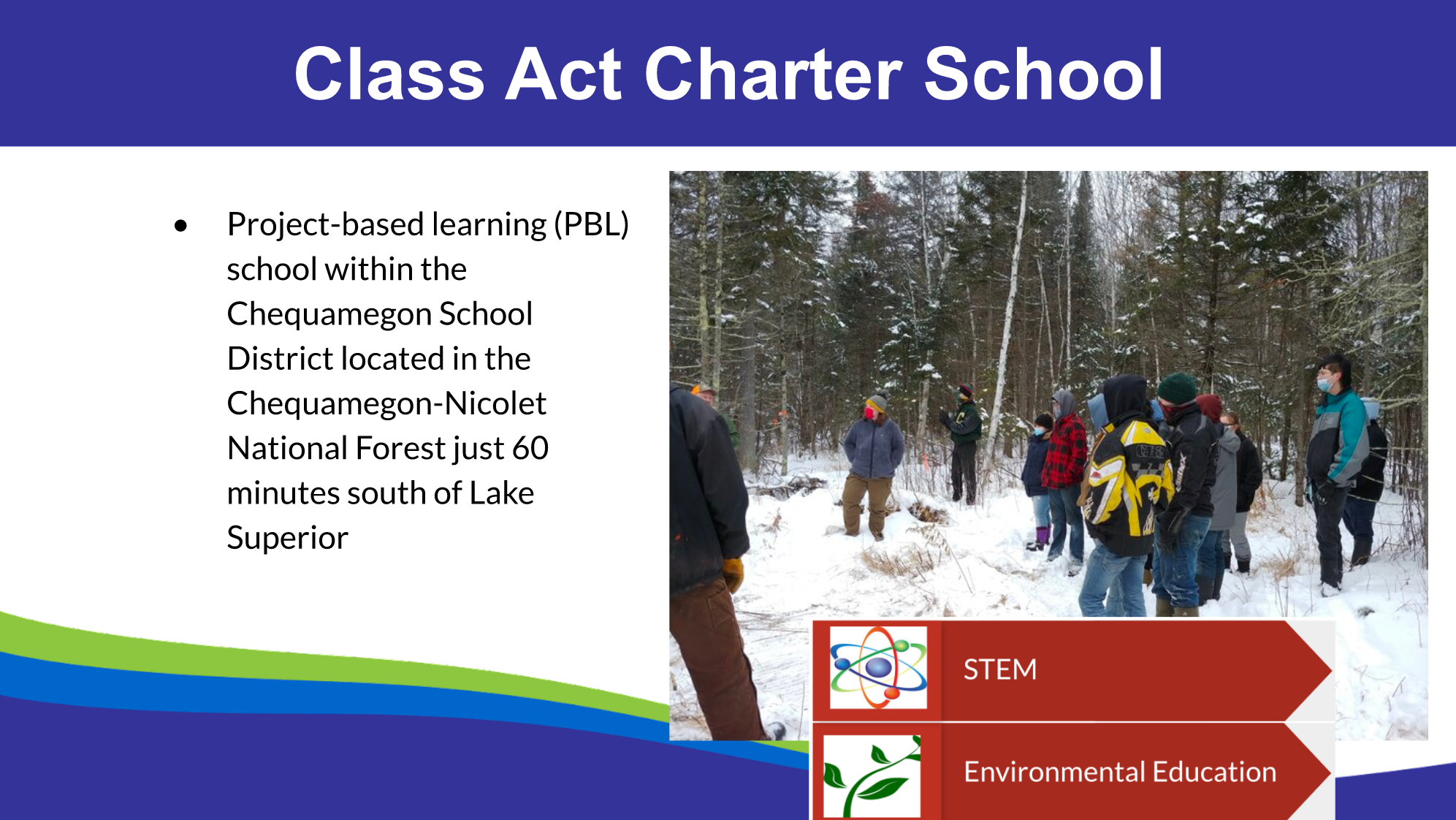Wisconsin Department of Public Instruction
A statewide approach to supporting outdoor learning
Wisconsin’s Department of Public Instruction (Wisconsin DPI) advances public education and libraries across the state. Wisconsin DPI has a long history of supporting place-based education that includes an incredible network of local “school forests” and extensive partnerships with nature centers and other nonformal education providers.
This robust pre-pandemic expertise and programmatic infrastructure for outdoor learning helped Wisconsin DPI move quickly to support schools and districts in their state with ideas and resources for moving their classes and programs outside as a COVID-19 response. The department’s Environmental Education and Service-Learning Consultant, Victoria Rydberg, is spearheading this effort.
Ms. Rydberg was a regular participant in the National COVID-19 Outdoor Learning Initiative’s Early Adopter Working Group, which met weekly during the summer of 2020 and continues biweekly through 2022. (Renamed: Community of Practice for Schools and Districts Moving Learning Outside) This community of practice helps education leaders from around the country share their experiences using outdoor learning as a COVID-response.
Through this experience, she created an online toolkit for schools in Wisconsin called Taking Education Outdoors. This extensive website provides guidance and links for Wisconsin schools as they consider taking their classes and programs outside. We particularly appreciate the toolkit’s advice about implementation costs and the importance of focusing on equity as schools reopen for in-person instruction.
This case study was published in April 2021.
Interview
We interviewed Victoria Rydberg, Environmental Education and Service-Learning Consultant at Wisconsin DPI, to find out more about the statewide efforts to encourage outdoor learning for a large, diverse student population during the pandemic and beyond. Kyle Macdonald, Senior Manager, Green Schoolyards America, conducted the interview.
Q: How did Wisconsin schools use outdoor spaces before the COVID-19 pandemic?
VR: Wisconsin has a very long history of integrating environmental education into K–12 curriculum. It's been a requirement here since the 1930s. Legislation mandated that “conservation education be taught in all high schools, vocational schools, and universities or colleges,” and schools were able to purchase land, often for one dollar, to steward a forest of their own. We have 412 school forests in 235 of our public school districts. It varied pre-pandemic, but outdoor classrooms were definitely being used.
Q: How did your office help bring education outside this year?
VR: Our agency was in charge of helping to create and implement Education Forward, our state-level guidance for how to reopen Wisconsin’s schools. As we were crafting that, beginning in April 2020, we made sure to have place-based learning throughout the document. We really pushed in that initial document by asking questions like: How do you take learning outside? How do you use community spaces? How do you think about learning differently? How do you look at small cohorts?
We knew that this was an opportunity to help shift thinking not just in response to the pandemic, but also to shift thinking for education overall. That laid the foundation for taking learning outside, because the idea that the state supports place-based learning was already out there in the minds of legislators and in the minds of superintendents and buildings and grounds folks.
After participating in the Early Adopters working group with Green Schoolyards America and then this summer, we took that information and applied it to make the most sense for us in Wisconsin.
The fact that our state has an environmental education consultant within the Department of Public Instruction is a huge advantage for schools, because outdoor learning and taking education outdoors is not something that they're just hearing about for the first time during the COVID pandemic. They have been hearing about this from me for ten years, and I have told them about the benefits and success stories!
All summer I was trying to gather all this information and understand how we could support this as a state. We held three different (virtual) listening sessions with formal educators and nonformal educators. We asked the question, “What do you need, and how can we pair nonformal educators and formal educators together to help do this work?
Statewide Education Data
2,190 public schools across the state
854,959 students and 62,482+ teachers across all schools
57% of public school meals were free/reduced (2017-2018)
Location
Large state in the northern-midwest of the United States, with two Great Lake coastlines (Lake Michigan and Lake Superior)
Milwaukee is the state’s largest city.
Close to 70% of Wisconsin’s population lives in urban areas.
Climate
Very cold winters and hot, humid summers
Snowfall: Average of 40” per year in the southern part of the state and up to 160” per year in the Lake Superior snow-belt
Warm summer weather: ~76°F - 80°F average summer temperatures
Cold, snowy winters: ~3°F - 23°F average low temperatures
Precipitation: ~31” per year
“Taking learning outdoors doesn’t require expensive equipment or gear. However, planning with equity in mind does require consideration for providing some gear to remove barriers.”
Partnering with Nature Centers
Q: Can you tell me about the role that nonformal educators play in Wisconsin’s outdoor learning programs?
VR: We have 135 nature centers in Wisconsin, and we know that 78% of their revenue comes from school trips. So COVID really posed a financial crisis for them. We wanted to make sure that when we come out of COVID, these nature centers are still here.
We divided the state into different regions and had formal educators and nonformal educators meet together in Zoom breakout rooms to talk about how we could problem-solve locally, since that’s where the solutions are going to come from. There isn't going to be a magical, state-wide solution. These are going to be grassroots, local solutions because the communities need to see the value of the nature centers as educational partners, and want to maintain those educational partners through this crisis. We also have seen nature centers listening to what those formal educators had to say during the sessions. Those were really positive meetings, because they provided an opportunity for that connection in this time of complete isolation.
Q: It sounds like people shifted their expectations. Can you share a specific example of this?
VR: Sure. After hearing from the teachers, one nature center shifted their approach because they're not allowed to be in the schools. Instead they're meeting teachers at those school grounds and they are leading programs outdoors. They're actually having more demand from teachers because teachers want to be outside. It’s been a really cool shift.
“School leaders need to see that nature centers are educational partners, and they want to maintain those educational partners through this crisis.”
Q: What’s next? Do you think you will continue to use outdoor learning as part of your overall approach after COVID is over?
VR: Well, we didn't want to build a toolkit that was just going to be a document on a shelf—that once COVID was over was never going to be looked at again. So we built it using this framework but also tried to make it flexible enough so that when COVID is old history, we will still have a strong toolkit for outdoor education. We're really trying to use this moment to continue the work and move it forward. Although right now the toolkit is framed in “Education Forward,” and is really aligned to the COVID response, it is not necessarily going to stay that way. We will continue to transform it, and build upon it. I will modify it, probably weekly, as new resources become available.
We created this toolkit at the policy and administrative level, but once we released it, we got tons of feedback that said, "This is great! Now how are you going to teach teachers to actually do this?" So, now we need to build more material that will translate the policies to the classroom lesson level. We need to create tutorials and some really simple asynchronous PDFs that teachers can engage in.
The outdoor Learning Toolkit
Wisconsin DPI’s Taking Education Outdoors toolkit was created to support and inspire schools and school districts across the state with resources that fit their local culture and climate. The online toolkit highlights the state’s many nature centers, nonprofit organizations, and school districts that have experience using outdoor classrooms. It also shares related resources such as operational documents, curriculum resources, and community stories, and includes links to videos, slide presentations, blogs, and social media posts that bring outdoor learning to life. In Ms. Rydberg’s words, it is a “living, changing resource” that she updates frequently.
As of April 2021, there are six sections in the Taking Education Outdoors toolkit. They include:
This statewide toolkit for Wisconsin builds on the framework of Education Forward: Reopening Wisconsin Schools. It was also inspired by the work of the National COVID-19 Outdoor Learning Initiative and builds on and incorporates some resources from our National Outdoor Learning Library.
“We knew that this was an opportunity to help shift thinking not just in response to the pandemic, but also to shift thinking for education overall.”
Community of Practice Presentation
At the December 14, 2021 Community of Practice meeting, Victoria Rydberg, Environmental Education and Service-learning Consultant for the Wisconsin Department of Public Instruction (WDPI), shared detailed examples of how Wisconsin schools took learning outdoors while expanding place-based learning and centering student engagement, joy, and happiness.
This Recorded Presentation with be posted soon!
Click here or on the image above to access a copy of Victoria Rydberg’s Community of Practice presentation slide deck
— “Connect, Explore, Engage with a Toolkit for Engaged Learning.”
This presentation also highlighted several excellent examples of outdoor learning at Wisconsin high schools, such as:
Communities
Oshkosk, Wisconsin
Bayfield Alternative Education Program Bayfield, Wisconsin
Class Act Charter School
Park Falls, Wisconsin
Media Coverage
“One giant outdoor classroom: Montessori school offers ideal space during COVID-19” — Wisconsin State Journal, October 5, 2020
“New Berlin teen creates outdoor COVID classroom for Eagle Scout project” (video) — Fox6 Milwaukee, September 6, 2020
“Birchwood school builds outdoor classroom” (video)
— WEAU 13 News, August 20, 2020
“‘The kids can take a bit of a mask break': Local teacher says 'Nature Kindergarten' brings back normalcy for students” (video, right)
— WTMJ.TV, Milwaukee, August 13, 2020
"Outdoor classrooms could help solve the school reopening dilemma”
— Wisconsin Examiner, July 30, 2020
“Bayfield Science Teacher Meets the Same Student Challenges, Only Now on a New Platform”
— Dispatches from Our Own Wisconsin (via University of Wisconsin-Madison), May 11, 2020
WTMJ-TV’s story features Peter Dargatz's kindergarten class at Woodside Elementary in Sussex, Wisconsin.
National COVID-19 Outdoor Learning Initiative
The National COVID-19 Outdoor Learning Initiative supports schools and districts around the country in their efforts to reopen safely and equitably using outdoor spaces as strategic, cost-effective tools to increase physical distancing capacity onsite and provide access to abundant fresh air. The Initiative seeks to equitably improve learning, mental and physical health, and happiness for children and adults using an affordable, time-tested outdoor approach to keeping schools open during a pandemic.
















